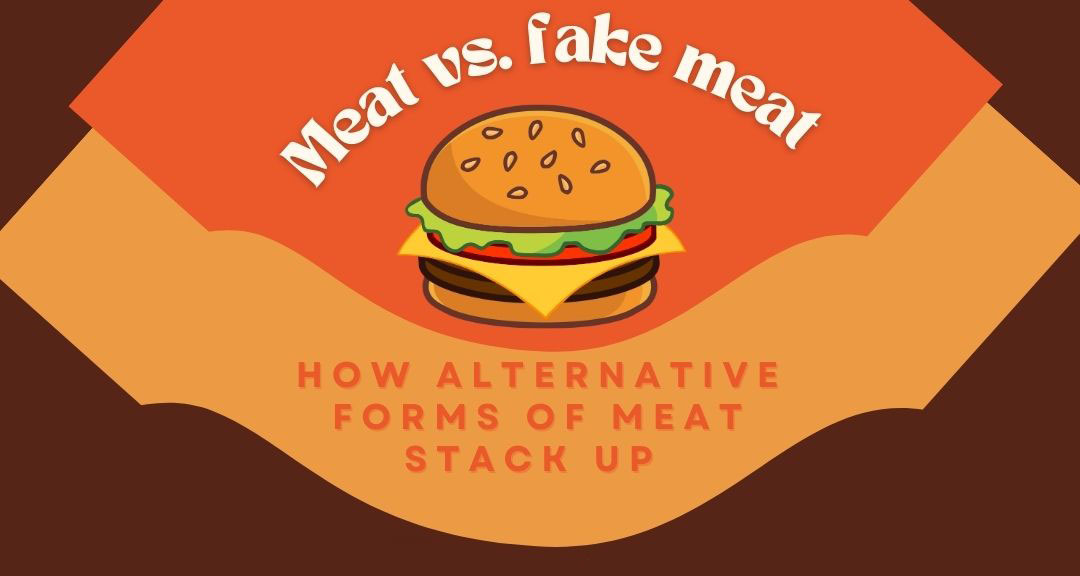Real Conservatives Want Real Meat!

It’s National Barbecue Month and the food that reigns supreme on the grill is under attack. Yup, beef is in the crosshairs. Eating red meat is blamed for a host of health problems, from high cholesterol and diabetes to obesity. Some critics claim factory-farmed beef contains inflammatory fats. And lastly, environmentalists make the questionable claim that cows make up 15 percent of all greenhouse gas emissions, a number that includes shipping meat to the market. Efforts are underway to supplant beef with plant-based alternatives, lab-grown meat and even bugs. While lab-grown beef has not yet been approved for human consumption, last month lab-grown chicken was, and beef is probably next.
But is meat really bad for you? Recent research shows red meat is just different, not better, or worse nutritionally than plant-based meat. A recent independent study by a group of researchers at Duke University contrasted nutritional profiles of plant-based meat vs. real meat. The Duke study of Metabolites, substances formed or are necessary for metabolism in the human body. Nutrients identified in meat “have potentially important physiological, anti-inflammatory, and or immunomodulatory roles” that are key for a healthy functioning brain, organs and muscles, the study found. Likewise, the plant-based meat contained “several beneficial metabolites not found in beef such as phytosterols and phenols.”

Plant-Based
Pros: Lower in cholesterol. Animal Friendly. Contains beneficial nutrients not found in meat.
Cons: Use GMO or highly refined ingredients such as palm oil. Beyond and Impossible Burger contains slightly less saturated fat and more sodium than red meat, so not exponentially healthier. Generally, more expensive than beef.
Red Meat
Pros: Most affordable of all the options and contains more protein than plant-based. Meat also contains essential amino acis and fats important to a healthy diet.
Cons: Cholestyerol and environmental impact, although smart ranching practices mitigates greenhouse gasses.
Crickets
Pros: High in protein, low in cholesterol. Cheaper and arguably more environmentally friendly than mass cattle feed lots.
Cons: Yuck factor. Shellfish allergies. Limited availability in the U.S., although cricket flour or whole roasted snacks are sold in the U.S. Overall, insects can transmit dangerous viruses and bacteria to humans.
Lab-Grown
Pros: Proponents claim it's environmentally friendly and can be engineered to have health attributes red meat lacks.
Cons: Prohibitively expensive and not currently sold in the U.S. Unclear whether taste and texture will match red meat and stymie widespread consumer acceptance. Uses Fetal Bovine Serum from slaughtered cow fetuses.
Even registered dietitians and defending meat. Diana Rodgers, registered dietitian, and executive director of Global Food Justice Alliance is the author of Sacred Cow: The Case for (Better) Meat: Why Well-Raised Meat Is Good for You and Good for the Planet. Rodgers argues that sustainably raised meat can be good for you and the environment.
 Since her book was published two years ago, Rodgers says, “I’ve seen even more anti-meat messaging in the media and in greenwashing of fake meat products, which are made from industrial agriculture.” She dislikes the highly processed plant-based meat that often contains genetically modified ingredients, saying it would be better to just eat tofu. She thinks bugs such as crickets farmed as meat won’t be accepted by the public and could cause potential allergic reactions, among other issues. And after lab-grown chicken was approved by the FDA, she recently told the New York Post, “I’d rather eat my shoe than eat lab-grown meat.”
Since her book was published two years ago, Rodgers says, “I’ve seen even more anti-meat messaging in the media and in greenwashing of fake meat products, which are made from industrial agriculture.” She dislikes the highly processed plant-based meat that often contains genetically modified ingredients, saying it would be better to just eat tofu. She thinks bugs such as crickets farmed as meat won’t be accepted by the public and could cause potential allergic reactions, among other issues. And after lab-grown chicken was approved by the FDA, she recently told the New York Post, “I’d rather eat my shoe than eat lab-grown meat.”
Lab-grown meat, or cellular meat as it’s sometimes called, is created in a sterilized lab using cells from animals. Proponents argue this is a slaughter-free and environmentally friendly way to grow meat. However, dead cows are involved; it uses the fetal bovine serum (blood of slaughtered cow fetuses) to stimulate cell production. There’s also an ick factor to lab-grown meat, and perhaps its biggest hurdle is price. When rolled out in 2013, a burger from Mosa Meat, a food tech company based in the Netherlands, cost $330,000.
The nutritional content of lab-grown meat is still a mystery. “I have yet to see a life cycle assessment on the production of [lab-grown meat],” Rodgers told the New York Post. “We don’t have any public data. McDonald’s is still better because the meat is a better option for vitamins.”
And despite animal activists sounding the alarm, red meat is still popular. Americans eat about 67 lbs. of beef per person every year, according to the United States Department of Agriculture. Ranchers and many Americans consider red meat up there with patriotic favorite foods like apple pie. In March of 2021 when Colorado Governor Jared Polis appeased the state’s animal rights’ activists by designating March 20 as “Meat Out Day,” the state’s meat lovers and ranchers reacted in kind by throwing statewide beef barbecues. The sweet smell of smoked meat wafted over the entire state to Polis’ chagrin. We can’t think about a better way to celebrate National Barbecue month than firing up the grill with your favorite cut of meat. And Mammoth Nation has a category dedicated to several amazing meat and grilling food merchants to choose from to plan ahead for your next cookout. Happy July!
Categories
Archives
- April 2024 (7)
- March 2024 (8)
- February 2024 (10)
- January 2024 (8)
- December 2023 (7)
- November 2023 (9)
- October 2023 (7)
- September 2023 (6)
- August 2023 (11)
- July 2023 (9)
- June 2023 (8)
- May 2023 (7)
- April 2023 (5)
- March 2023 (8)
- February 2023 (5)
- January 2023 (5)
- December 2022 (7)
- November 2022 (8)
- October 2022 (3)